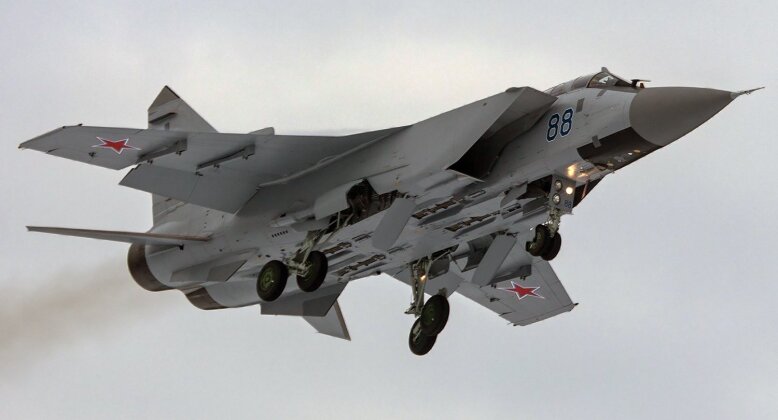Satellite imagery has confirmed that Ukrainian strikes using newly supplied ballistic missiles from the American ATACMS system were employed successfully to target Russia’s Belbek Air Base on the disputed Crimean Peninsula, with two burned out MiG-31 Foxhound interceptors seen at the facility in the aftermath. An adjacent fuel farm and unknown other small structure were also seen to have taken damage. A MiG-29 fighter was also seen destroyed, although the aircraft have been widely used as decoys and are not known to be operating in the area. Any casualties remain unknown. Destruction of MiG-31s is significant as the aircraft retain an elite status in the Russian Air Force and have played an outsized role in the country’s campaign in Ukraine since 2022, including both as interceptors and, when equipped with Kinzhal ballistic missiles, as strike fighters. The aircraft are considered Russia’s most capable in terms of air to air capabilities with the partial exception of the country’s sole regiment of Su-57 fighters, with their R-37M air to air missiles with extreme 400km ranges, unmatched Mach 6 speeds and very large 60kg warheads having proven to be particularly potent against Ukrainian aviation assets.
A key feature distinguishing the MiG-31 from all other combat aircraft in the world is the sheer size of its radar, which at close to 1000 kilograms provides a very high degree of situational awareness and allows for use of long range missiles like the R-37M without support from airborne early warning and control assets like the A-50. The Su-35 fighter, which has also used R-37M missiles in combat, by contrast, cannot use these missiles at anything approaching their full range without sharing data with other aircraft – usually A-50s. The MiG-31’s oversized radar also allows it to provide targeting data to friendly assets, including S-400 air defence systems utilising their new 40N6 surface to air missiles which have demonstrated a 400 kilometre engagement range even against low flying targets, but require targeting data usually from the air. Other than the A-50, the MiG-31 is considered the optimal aircraft to provide such support.

The Russian Air Force is currently estimated to field over 120 MiG-31s, with the loss of two of the aircraft thus being a not insignificant blow to its combat capabilities. With over 100 airframes remaining in storage, however, these numbers can be replenished through refurbishment despite the MiG-31 no longer being in production. Perhaps the most significant consequence of the strike, however, is its demonstration of the vulnerability of aircraft in Crimea, which could force future sorties to be flown from bases deeper inside Russian controlled territory and thus have a negative impact on sortie rates. The strike demonstrates the value of the ATACMS and similar systems as asymmetric assets to engage adversaries with superior air power, with Russian having itself invested heavily in similar surface to surface assets specifically for the purpose of neutralising NATO airbases in wartime.
